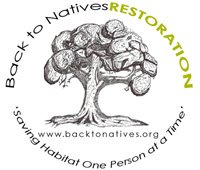
Although it did not rain, we still had a fabulous time hiking with our Naturalist Joel Robinson at the Santiago Park Nature Reserve.

We observed the following bird species:
Snowy Egret
Turkey Vulture
Band tailed pigeon
Anna's hummingbird
Black phoebe
Cedar waxwing
California towhee
American goldfinch







The staff at Santiago Park do biological monitoring within the Reserve, including this "herp" trap, which captures reptiles and amphibians for observation and release.

Always on the look out for animal evidence, Joel points out coyote scat along the trail. It was fresh!

Boards are places along the trail to offer shelter to small critters - and to give Naturalists an opportunity to observe what is hanging out beneath.

Hundreds of walknut shells covered the ground like confetti after a squirell party.

A track station lures predators in with scent applied to a rock. Their tracks are left behind in gypsum powder, and Natralists return in the morning to see what is frequenting the area.




Searching for aquatic organisms along Santiago Creek.

Pausing beneath an oak to observe the carpet of acorns. Native Americans once ground these seeds in mortars within rocks, then leeched them to make flour. Oaks are good shade trees. Next time you stand beneath an oak, notice the difference in size between the leaves in the understory and the leaves at the top of the tree. Why are they different?

Allison observes an oak gall. Wasps deposit their eggs into oak stems, which causes them to form a protective ball around the young arthropods. When they emerge, they chew their way out! Galls were once used to make ink. Leonardo da Vinci wrote his notes using iron-gall ink. Bach composed with it. Rembrandt and Van Gogh drew with it. The Constitution of the United States was drafted with it. The black ink on the Dead Sea Scrolls was found to be iron-gall ink.

This tiny oak may one day be as large as the one we rested under today! Come back in a couple hundred years!

These oak and sycamore trees have been friends for a VERY long time!

A snowy egret gives us a show, as it searches for food in Santiago Creek.


An elderberry makes it's home in the elbow of a sycamore tree.

This wall behind Reggie shows the sedimentary layers often exposed along the banks of the Santiago Creek.


A horse skull in the wall.



We headed back and the ladies found another excuse to wade through the mud.

A visit to the Road Less Traveled Store to meet Delilah and explore her store filled with sustainable items. Visit http://www.roadlesstraveledstore.com/ for more info!





Starving, we all sat down for a meal at the Olde Ship. I had Beans on Toast... Hmm... Reggie's Vegetarian Cottage Shephard Pie tasted GREAT! Visit http://www.theoldeship.com/ for more info.

Judy's drawing said it all. It's FUN to "go green!"

Join us for our 2nd hike in the "Around the County in 18 Hikes" series, tidepooling at Dana Point Marine Life Refuge on January 20, 1:00PM. Join BTN for a fun Scavenger Hunt (NO collecting!). We’ll hike to the point at low tide, explore a cave and search for intertidal creatures. We’ll be keeping track of the number of times you join us, because at the end of the year those who have attended THE MOST hikes will be entered to win a fabulous prize! Visit www.backtonatives.org/specialevents.html for details on all 18 hikes and events. RSVP to info@backtonatives.org – we’ll send you directions.


























